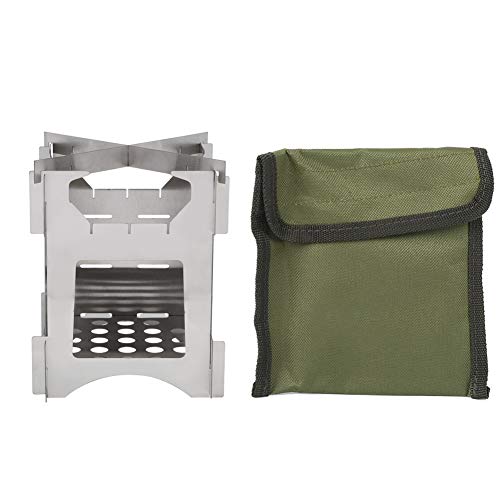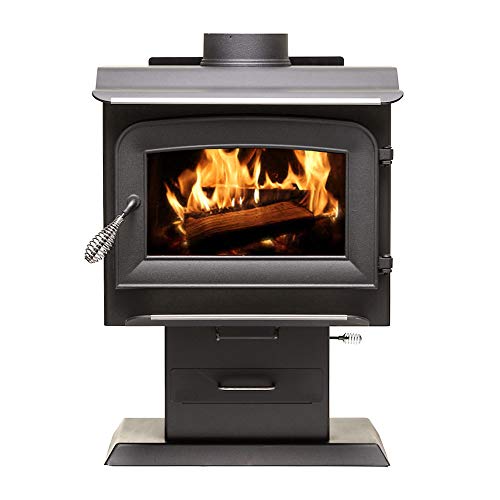10 Of The Top Facebook Pages Of All Time About Stove Wood Burning
페이지 정보

본문
 How to Properly Start a Wood Burning Stove
How to Properly Start a Wood Burning StoveWood best woodburner stoves are a warm way to heat a room and also save energy. However, they need a certain amount of maintenance.
A majority of modern wood stoves comply with EPA emission guidelines. You can look for an EPA sticker on the grate or underneath it to ensure that your stove doesn't emit harmful pollutants.
How to Start a Wood Fire
The scent and sound of a woodfire is an enjoyable addition to any house. However, it is important to know the proper way to make a fire on your stove. Incorrect methods can result in the fire not burning efficiently and creates smoke or creosote. The following tips can assist you in starting an fire that can heat your home with minimum effort and with the highest security.
Before you begin a fire, check the condition of your coals and logs. If they're damp, it will smother your fire and hinder proper burning. You might want to open the chimney to eliminate any ash that falls into the stove.
Begin by placing some small contemporary wood burning stove, dry newspaper pieces in your outdoor woodburner stove. This will help to ignite the tinder and kindling. Once they start to ignite, add a layer of larger pieces of tinder to the top of the pile. This should be done in a crosshatch pattern so there is air between each piece of wood.
If you own wood stoves that have an automatic control for combustion it will automatically supply an air stream controlled to your fire as it grows. This will allow the fire to burn steadily without having to open the door of your stove often to keep it in check.
It is essential to avoid using excessive tinder as this can lead to the fire burning at an excessive rate and doesn't make use of the fuel as efficiently as it could. After you've built a solid bed in your stove of tinder, kindling and embers begin the main flame by laying two large base logs on the grate. Then, you can lay a layer of smaller logs perpendicular to these and on top of the base logs. This "top-down" method of creating a fireplace will produce a long-lasting, efficient fire that doesn't consume larger base logs.
Close the damper after the fire is established and kept it shut. The fire may be smothered if you open the damper before it is fully established. It can also decrease the effectiveness of the fire.
Adding Wood
Stoves can be used to efficiently heat your home and also save you money. They can be utilized together with central heating systems or furnace to provide additional heat in large houses. Many of the latest stoves that are clean burning available use advanced combustion principles that can separate the burning volatile substances from combustible gasses and tar. This is achieved by providing air at two distinct stages. The first stage allows for the combustion of volatile compounds and the second offers fresh air that is pre-heated. This improves combustion and decreases smells.
The amount of heat that you get from your stove will depend on the type of wood used and the amount of moisture in it, as well as the size of the logs. The logs must be stored in a well-ventilated space for a period of time before you attempt to burn them, to give the wood burner fireplace ideas time to dry. If the logs are soaked with too much moisture, they will create steam which is essentially wasted energy.
When you are burning the fire, it is recommended to add more wood to the stack at intervals, not all at one time. In addition, adding too much wood at one time can cause the temperature of the firebox to rise and creates a vortex, which draws smoke and unburnt volatile compounds back into the flame, which could reduce your stove's efficiency.
Avoid using other combustibles inside your stove, like paper or cardboard because they are not wood. They have different physical properties and cannot be burned without producing dangerously high temperatures. You should also not use compressed combustibles like wood briquettes as they have a distinct chemical and physical composition to real firewood, and are not approved for burning in wood burning stoves.
It is essential that you have a professional install and test your wood burning stove. A certified WETT technician will test your stove to ensure that it is safe and efficient. They will also check that your chimney is functioning properly. These professionals can also offer maintenance services to keep your stove and chimney in top condition. They can look for leaks in the areas accessible to your chimney, and fix any problems they find. They will also ensure that all residents of the house understand and follow the evacuation procedure in the event of an accident.
Adjusting the Damper
If you're not making use of your stove, a damper can control how much heat is lost through the chimney. It can also be used to manage the flame. If the flue is open but the damper is not closed the fire will not be able to burn as it should and smoke will pour into your home. To ensure you have the best Woodburning stoves fire with your damper adjusted properly you have to test different locations and observe how each one affects the flames.
You should keep your damper open to allow air to enter and exit the flue when a flame is burning. This allows the fire to get a good fire going and keeps it in good shape so that you can enjoy it for a long time. The right opening can stop the fire from being starved of air and prevent it from blowing smoke.
To adjust your damper properly, you must first ensure that the fireplace has been preheated and the wood stove is hot. This will ensure that the chimney is warm, and also that it has a good draft. After these steps are completed, the damper on the wood stove can be adjusted.
After the fire has smolder a bit you should shut the damper down to about three-quarters of its original position. This will stop warm air in the room from venting into the chimney, while allowing smoke to escape out of the wood stove.
This is the most effective way to prevent the fire from becoming too hot, while also keeping it burning. The draft might be stopped if one closes the damper too far however a cold breeze could be able to enter your home if the damper is not closed.
Placing your hand on the top wood burning stoves of the flue pipe will inform you how much the damper has sunk. If you feel a slight breeze pushing against your palm the damper is probably to be open.
The damper settings can vary from one stove to another and even between different kinds of wood. You can play around with different settings to get an idea of the most suitable setting for your stove.
Clean Up
After an incident, it is important to clean the stove and flue. This will lower the risk of a chimney fire which is the main cause of wood stove related fires in homes. Creosote, a sticky substance which can build up within the stovepipe, can be extremely dangerous. It is caused by the moisture and wood particles that are not burned that cannot escape the fire. It could also be caused by poorly lit fires.
A regular cleaning schedule can help to prevent the buildup of creosote. This can be done by cleaning your chimney once a year. It is recommended that you have your stove and fireplace professionally inspected and cleaned at least once per year, too.
It is also an excellent idea to clean the Ash tray and grate frequently. It is recommended to burn only wood that is well-seasoned because it produces less creosote. Avoid burning paper, cardboard and plastic. These materials can release harmful chemicals into the air and flue, that could end up in your home.
The glass that is used on the wood burning stove has to be regularly cleaned as well. Most newer wood stoves have self-cleaning windows, which means they don't require as much scrubbing. You can apply stove glass cleaners to the window if you're capable of getting the glass as clean as you want on your wood stove.
Other helpful tips to maintain your wood stove are to turn the vent down when you are not using it and cracking a window or door to increase the flow of air. This will keep the fire burning hotter and more efficiently, as it won't need to exert as much effort to circulate the air. It is a good idea not to stack logs or leave them on the fire for an extended duration. This could cause warping and splits. Finally, it is recommended to not use compressed combustible logs in your wood stove because the paraffin they contain can melt and then flow down the flue which could damage it.

- 이전글Diagnosis Of ADHD: 11 Things You've Forgotten To Do 24.09.27
- 다음글Responsible For An Treadmill For Sale Near Me Budget? 10 Incredible Ways To Spend Your Money 24.09.27
댓글목록
등록된 댓글이 없습니다.